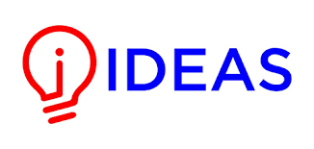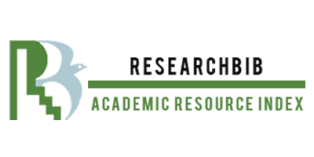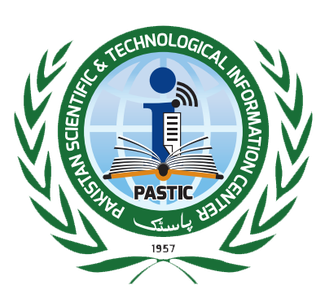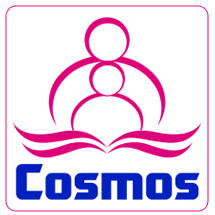Barriers to AI Adoption in Education: Insights from Teacher's Perspectives
Keywords:
Artificial Intelligence, AI in education, AI literacy, Barriers to AI Adoption, Teachers' Perception of AI In EducationAbstract
A
rtificial intelligence in education is capable of offering significant benefits in the form of content generation, personalized learning, assistance in administration, and analytical reports. Despite the benefits, the integration of AI in education faces several challenges hindering its integration. The barriers to AI adoption in education are critical to explore, as they affect the incorporation of innovative educational technologies. The study aimed to explore the perceived barriers to suggest practical recommendations to enable educators to embrace innovative AI technologies for teaching. This study employed a qualitative research design with a descriptive research approach. A purposive sampling method was applied to select public and private sector educators from schools, colleges, and universities in Pakistan. Data were collected using an open-ended questionnaire designed using Google Forms. Data were analyzed using thematic analysis to recognize and categorize patterns and themes in responses, gaining a thorough understanding of the key barriers to AI adoption. The insights revealed that integrating AI in education inherits barriers in user experience, technological, and skills limitations, content reliability, privacy and security concerns, and overdependence on AI a risk to reduce creativity and learning. To overcome the barriers, clear ethical guidelines and policies, a balanced integration of AI with pedagogy, AI literacy training, and support to enable teachers to effectively use AI in education are recommended.
References
F. A. A. Jamil Ahmed, Asadullah Burdi, “Embracing Innovation: Teachers’ Adoption of Artificial Intelligence in Education,” Journal of Development and Social Sciences. Accessed: Feb. 24, 2025. [Online]. Available: https://www.researchgate.net/publication/388482730_Embracing_Innovation_Teachers’_Adoption_of_Artificial_Intelligence_in_Education
Todd W. Neller, “The Evolution of AI in Education: Past, Present, and Future,” AI Matters. Accessed: Feb. 24, 2025. [Online]. Available: https://teachflow.ai/the-evolution-of-ai-in-education-past-present-and-future/
S. Sharma, G. Singh, C. S. Sharma, and S. Kapoor, “Artificial intelligence in Indian higher education institutions: a quantitative study on adoption and perceptions,” Int. J. Syst. Assur. Eng. Manag., pp. 1–17, Jan. 2024, doi: 10.1007/S13198-023-02193-8/METRICS.
Rohit Reddy Chananagari Prabhakar, “Barriers to AI Tool Adoption for Non-Technical Educators in the Digital Age,” J. Sci. Eng. Res., vol. 11, no. 8, pp. 211–214, 2024, [Online]. Available: https://jsaer.com/download/vol-11-iss-8-2024/JSAER2024-11-8-211-214.pdf
O. Asan and A. Choudhury, “Research Trends in Artificial Intelligence Applications in Human Factors Health Care: Mapping Review,” JMIR Hum Factors 2021;8(2)e28236 https//humanfactors.jmir.org/2021/2/e28236, vol. 8, no. 2, p. e28236, Jun. 2021, doi: 10.2196/28236.
Deborah Petrat, “Artificial intelligence in human factors and ergonomics: an overview of the current state of research,” Discov. Artif. Intell., vol. 1, no. 3, 2021, doi: https://doi.org/10.1007/s44163-021-00001-5.
Margie Meacham, “A Brief History of AI in Education,” Globa Science Research Journal. Accessed: Feb. 24, 2025. [Online]. Available: https://www.google.com/search?q=A+Brief+History+of+AI+in+Education&rlz=1C1BNSD_enPK1109PK1109&oq=A+Brief+History+of+AI+in+Education&gs_lcrp=EgZjaHJvbWUyBggAEEUYOTIICAEQABgWGB4yCAgCEAAYFhgeMg0IAxAAGIYDGIAEGIoFMg0IBBAAGIYDGIAEGIoFMg0IBRAAGIYDGIAEGIoFMg0IBhAAGIYDGIAEGIoFMgcIBxAAGO8FMgoICBAAGIAEGKIE0gEHNTE3ajBqN6gCALACAA&sourceid=chrome&ie=UTF-8
Mohammad AL-Smad, “History of Using AI in Education,” HackerNoon. Accessed: Feb. 24, 2025. [Online]. Available: https://hackernoon.com/history-of-using-ai-in-education
Jackson and E. Abraham, “The Evolution of Artificial Intelligence: A Theoretical Review of its Impact on Teaching and Learning in the Digital Age,” EconStor Prepr., 2024, Accessed: Feb. 24, 2025. [Online]. Available: https://ideas.repec.org/p/zbw/esprep/280893.html
“Generative AI Tools for Teaching & Learning,” University of Illinois Urbana-Champaign. Accessed: Feb. 24, 2025. [Online]. Available: https://citl.illinois.edu/citl-101/instructional-spaces-technologies/teaching-with-technology/generative-artificial-intelligence/genai-tools
Pavitra M, “How to Use AI for Lesson Planning (Use Cases & Tools),” Click up. Accessed: Feb. 24, 2025. [Online]. Available: https://clickup.com/blog/how-to-use-ai-for-lesson-planning/
Brendan Clugston, “Advantages and disadvantages of AI in education,” University Canada West. Accessed: Feb. 24, 2025. [Online]. Available: https://www.ucanwest.ca/blog/education-careers-tips/advantages-and-disadvantages-of-ai-in-education
Chirag Bharadwaj, “12 Ways AI in Education is Transforming the Industry,” appinventiv, 2025, [Online]. Available: https://appinventiv.com/blog/artificial-intelligence-in-education/#:~:text=Artificial intelligence in education offers,creativity and innovation among students.
I. G. Firuz Kamalov, David Santandreu Calonge, “New Era of Artificial Intelligence in Education: Towards a Sustainable Multifaceted Revolution,” Sustainability, vol. 15, no. 16, p. 12451, 2023, doi: https://doi.org/10.3390/su151612451.
Z. Xu, “AI in education: Enhancing learning experiences and student outcomes,” Appl. Comput. Eng., vol. 51, no. 1, pp. 104–111, 2024, doi: 10.54254/2755-2721/51/20241187.
Denise Jackson and C. Allen, “Enablers, barriers and strategies for adopting new technology in accounting,” Int. J. Account. Inf. Syst., vol. 52, p. 100666, 2024, doi: https://doi.org/10.1016/j.accinf.2023.100666.
M. H. Rahman, A. B. M. Ghazali, and M. Z. H. B. M. Sawal, “Reasons for resistance to technology adoption in university libraries in Bangladesh,” https://doi.org/10.1177/02666669241294249, Nov. 2024, doi: 10.1177/02666669241294249.
Bernard Marr, “11 Barriers To Effective AI Adoption And How To Overcome Them,” Forbes. Accessed: Feb. 25, 2025. [Online]. Available: https://www.forbes.com/sites/bernardmarr/2024/05/10/11-barriers-to-effective-ai-adoption-and-how-to-overcome-them/
L. B.-L. Elisabeth Staksrud, Ivar Kolstad, Kirsten Johanne Bang, “Guidelines for Research Ethics in the Social Sciences and the Humanities,” The Norwegian National Research Ethics Committees. Accessed: Feb. 25, 2025. [Online]. Available: https://www.forskningsetikk.no/en/guidelines/social-sciences-and-humanities/guidelines-for-research-ethics-in-the-social-sciences-and-the-humanities/
S. H. F. N. Jamil Ahmed, Fida Chandio, “AN INVESTIGATION INTO STUDENT PERCEPTIONS: THE GAMIFICATION OF E-LEARNING SYSTEMS,” Pakistan Journal of Educational Research. Accessed: Feb. 25, 2025. [Online]. Available: https://www.researchgate.net/publication/374741370_AN_INVESTIGATION_INTO_STUDENT_PERCEPTIONS_THE_GAMIFICATION_OF_E-LEARNING_SYSTEMS
Harjyot Kaur, “Role of AI in Education: Use Cases, Examples, Challenges, and Future,” Signity Solutions. Accessed: Feb. 25, 2025. [Online]. Available: https://www.signitysolutions.com/blog/role-of-ai-in-education
“AI in Education: Benefits, Challenges, and Best Practices,” OpenLearning. Accessed: Feb. 25, 2025. [Online]. Available: https://blog.openlearning.com/ai-in-education
“The Role of AI in Modern Education,” The University of Lowa. Accessed: Feb. 25, 2025. [Online]. Available: https://onlineprograms.education.uiowa.edu/blog/role-of-ai-in-modern-education
“AI in education: how to navigate the opportunities and challenges,” British Council Global. Accessed: Feb. 25, 2025. [Online]. Available: https://internationalschools.britishcouncil.org/blog/ai-in-education-how-to-navigate-the-opportunities-and-challenges
A. Essien, G. Chukwukelu, and V. Essien, “Opportunities and challenges of adopting artificial intelligence for learning and teaching in higher education,” Foster. Commun. Learn. With Underutilized Technol. High. Educ., pp. 67–78, Sep. 2020, doi: 10.4018/978-1-7998-4846-2.CH005.
Anna-Zsófia Csontos, “AI in Education: A Critical Look at the Road Ahead,” UX-Studio. Accessed: Feb. 25, 2025. [Online]. Available: https://www.uxstudioteam.com/ux-blog/ai-in-education
T. Moyer, “Trouble with Tech: 11 Problems with AI in Education - Banyan Global Learning,” Banyan Global Learning. Accessed: Feb. 25, 2025. [Online]. Available: https://banyangloballearning.com/2024/10/03/problems-with-ai-in-education/
Omar Ali, Peter A. Murray and T. M. Mujtaba Momin, Yogesh K. Dwivedi, “The effects of artificial intelligence applications in educational settings: Challenges and strategies,” Technol. Forecast. Soc. Change, vol. 199, p. 123076, 2014, doi: https://doi.org/10.1016/j.techfore.2023.123076.
N. A. K. Amy Liew Xiu Jie, “The Challenges of Higher Education Students Face in Using Artificial Intelligence (AI) against Their Learning Experiences,” Open J. Soc. Sci., vol. 12, no. 10, 2024, doi: 10.4236/jss.2024.1210025.
Downloads
Published
How to Cite
Issue
Section
License
Copyright (c) 2025 50SEA

This work is licensed under a Creative Commons Attribution 4.0 International License.





















